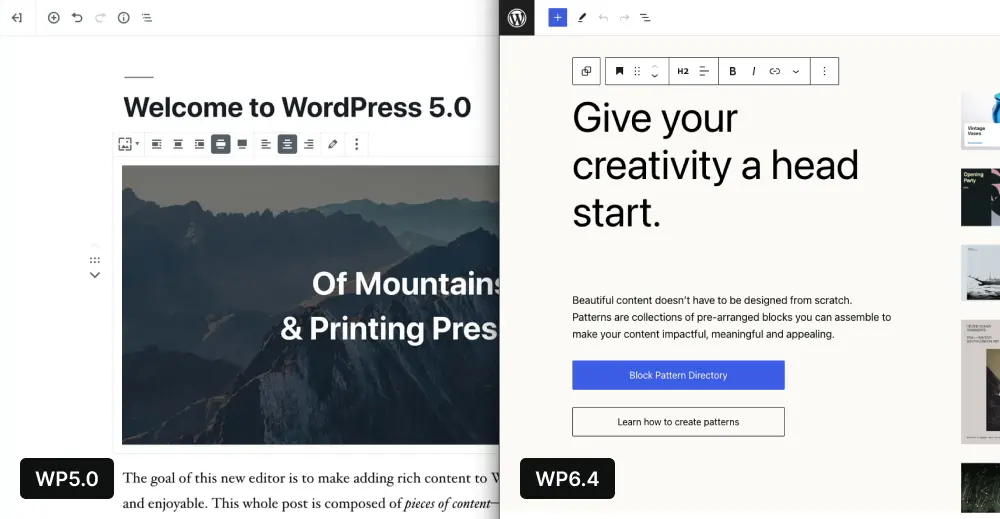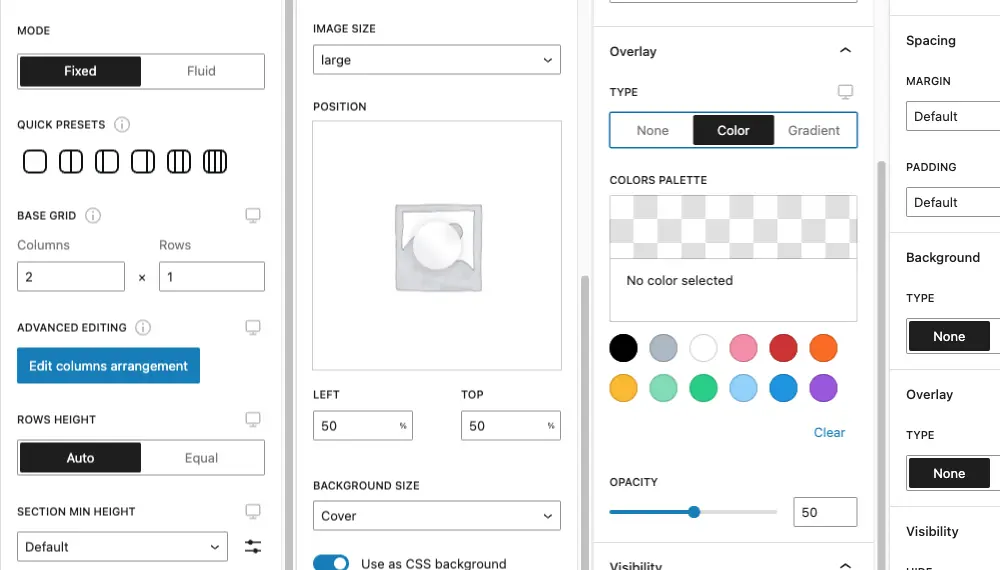Gutenberg vs page builders: where are we today?
The discussion about the Block Editor – at that time, still referred to by its project name, Gutenberg – began in the not-so-distant 2017.
Many of us were attending WordCamp Europe in Paris, and, on Contributor Day, a significant portion of the workspace was dedicated to discussing the project. I don’t recall if more than the general idea of the project, its division into sequential phases, or an exploration of an embryonic UI for the first prototype was shared in that occasion.

What I do remember, though, is that on that day I had a distinct feeling that soon – how soon was uncertain – the WordPress we knew would change forever.
The Evolution of the WordPress Block Editor
Fast-forward to today – six years, in our industry, is a lifetime – the Block Editor is now a completed reality, not only an integral part of the WordPress Core but also the driving force behind the platform’s advancement.
While the design and development landscape has changed dramatically, one might wonder if the market for those using WordPress to create content has changed, even if only minimally, in response.
It would be naive to think that nothing has shifted during such a significant timeframe. However, it seems safe to say that the market is still polarized, with users divided between those who prefer using a page builder and those who choose other methods to compose their pages.
A contrary trend is the number of available page builders on the market. Despite the steady growth of the Block Editor, alternatives have increased rather than decreased.
If the supply of alternatives to those provided by the WordPress Core has grown, what is the state of demand from users?
Market Dynamics: Page Builders vs. Alternatives
Being an active part of the WordPress community, participating in events, or organizing local meetups allows us to directly assess the situation. The current state of affairs suggests that the adoption rate of the Block Editor is probably not as high as one might have expected.
For many people today, creating content and layouts on WordPress still means using plugins like Elementor or Divi, or other builders, rather than going through the tools provided by WordPress Core, which, despite their not-so-young age, are still perceived as immature and ultimately lacking what is needed to deliver work predictably in terms of time and cost.
I believe that this is somewhat natural. The Block Editor is a new player entering a market rooted and grown over time, where users tend to be attached to their choices and, to some extent, resistant to change.
In such a context, even having a name, even bearing the emblem of WordPress Core itself, doesn’t help much, especially if feature parity with competitors has not yet been achieved.
Advanced Columns: Bridging the Gaps

This is where Advanced Columns comes into play.
Our goal from the beginning has been to try to fill the gaps we perceive exist between the Block Editor/Site Editor and their competitors, in order to provide an advanced layout creation and management system.
For example, one of the cornerstones of our design process has been the management of Media Queries, which will see its completion in the Pro version of the plugin.
We want to create something that is tangibly better than the status quo. That’s why we wanted to give users the ability to edit their content with a faithful representation of how it will appear at a given breakpoint directly in the editor.
We believe there is enormous value in this, but we are aware that the challenge of doing it well is anything but trivial.
Design Philosophy and User Experience
In creating tools that, in our opinion, are missing from the Block Editor to become a real alternative for more people than today, we feel a strong need to stay connected to the design and implementation spirit of the Block Editor itself.
This directly translates into designing and creating tools that, in terms of experience, are close to the modus operandi of the Block Editor. For example, we chose to resist the temptation to reinvent the wheel but to use the rich library of components that WordPress Core provides.

Moreover, we believe that this is an approach that other plugin manufacturers extending the Block Editor should also follow. If every significant plugin continued to do its own thing, creating its set of controls with its UI visually detached from the rest of the editor, WordPress would become even more chaotic than it sometimes already is. In a time when many efforts by WordPress Core are aimed at simplifying the user flow, this would be anachronistic, to say the least.
In the recent State of the Word speech, Matt Mullenweg and the rest of the team working on the project have outlined not only what awaits us in 2024 but have generally defined the course for the upcoming developments of the platform.
Although a definitive timeline was not discussed, it seems evident to me that the WordPress we will be using in two years will be very different from the current one.
Aligning with the developments that will take place on the platform, especially concerning the usage flow and, consequently, at the user interface level, is a mandatory move, more than just a wise one.
Embracing Interoperability and Future Prospects
The real goal of our work today is to provide a credible alternative to various page builders that embraces the Block Editor standard, both in terms of interface, usage mentality, and technically in terms of data structure.
Today, in 2023 – and incidentally, I doubt it ever was – it is simply no longer acceptable to invent proprietary solutions from which users can no longer escape, even just to move their content from one system to another.
For this reason, Advanced Columns embraces the philosophy, promoted from the beginning by WordPress Core, of the single-purpose block, offering users the ability to convert their data back to a standard column block, preserving content to potentially migrate it to another system.
The beauty of complex systems is when individual components work harmoniously together.
The Block Editor gives us a great opportunity to be the true point of connection between projects and themes, creating elaborate structures that share a level of interoperability never seen before on the platform.
Like all opportunities, it would be wise not to let it slip away.
